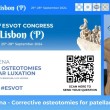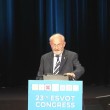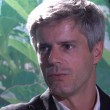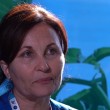J.P. Genevois
I graduated in 1970 at the Ecole Nationale Vétérinaire de Toulouse (Toulouse Vet School)
1971 : military service
1972 : worked in a small animal private practice in Nancy (north-east of France)
1973 : got a position of “Maitre-Assistant” (assistant professor) in the dpt of surgery at the Ecole Nationale Vétérinaire de Toulouse
1979 : sitted and passed the “Agrégation de chirurgie” examination (at this time, “Agrégation” was the highest competitive examination for teachers, in any field, in France)
1983 : got my “Doctorat de 3ème Cycle” degree (equivalent to PhD)
Among several other diplomas, I have a Univ. Dipl of applied biomecanics and biorrheology
From 1973 to 1990, I stayed at the dpt of surgery of the Ecole Nationale Vétérinaire de Toulouse, where, from 1981 on, I was “Maitre de conférences” (associate professor).
1990 I applied to, and got, the position of, Full professor, Head of dept of surgery, at the Ecole Nationale Vétérinaire de Maisons-Alfort (near Paris)
1991 I moved to the the position of Full professor, Head of dept of surgery and anesthesiology, at the Ecole Nationale Vétérinaire de LYON, where I also became successively Head of he Smalll Animal Teaching Hospital, then Head of the Small Animal Department.
My main Fields of interest & research are small animal orthopaedics, bone and joint pathology, hip and elbow dysplasia.
I am an AOVet ans an ESVOT member since 1988
I’ve been an AVA (Association of veterinary Anesthetists) from 1988 to 2005, and participated in 1993 to the foundation of the ECVA (Eueropean college of vet anesth) at the Rauischholzhauzen meeting (Austria)
In 1990, I particicipated to the meeting which founded the ECVS. In 1997, I created the ECVS residency at the Ecole Nationale Vétérinaire de LYON. Since then we had 6 residants who got the ECVS diploma.
I will retire on october 2012, to become a professor emeritus at the Ecole Nationale Vétérinaire de LYON
35 reseach publications in referred scientific journals
23 research referred presentations at international vet meetings
105 publications of post-educational interest in veterinary journals/books
244 post educational lectures at vet meetings in France
34 post educational lectures outside France
G.S-S. How young were you when you decided to become a veterinarian and what influenced that decision?
J-P G. It was not a vocation that I had from the childhood. In fact, I decided to become a vet a short time before I graduated from high school. At this time, I hesitated between going on learning foreign languages (I liked learning English and German), becoming a sport teacher, or making a career in the biological field. The veterinary profession was presented to me, as linked to biology, by an educational advisor. I loved the animals, and after a very short stay (3 days) in a small animal practice, I decided that I would be a Veterinarian. I applied to be accepted in a class (“class préparatoire") in which I could prepare the entrance examination to French veterinary schools, and was accepted at a good one, situated in the "Lycée Pierre de Fermat" in Toulouse (south-west of France, where there is also one of the four French Veterinary Schools). I passed the examination in June 1967 and joined the first term of students to enter the Toulouse Veterinary School. I graduated in June 1970, and presented my DMV thesis in October 1971.
G.S-S. At what point in your training did you decide to become interested and specialise in orthopaedics?
J-P G During my scholarship at Toulouse Veterinary School, I was always ranked among the three top students of my promotion. It was a tradition, at this time, that the best students were invited to stay at the School and sit several examinations to join the Faculty. I was only interested in a teaching career, in small animal internal medicine or surgery, but a position was not available in those fields. After my military service, I worked in a small animal private practice in Nancy (north-east of France). In November 1973, I received a letter from the Head of Surgery in the Toulouse Veterinary School telling me that his assistant decided not to stay and, if I was still interested a position was now available. I jumped at this chance, and from this moment on, went through the different steps that allowed me to become an Assistant Professor in 1979. At this time, we taught all kind of surgery, in all species, but also anaesthesiology, radiology, and horse medical shoeing. It was the very beginning of veterinary orthopaedics.
We tried to learn from human surgeons, and did the best what we could with pins and wires, or external fixators (we had already a very good external fixator system, invented by Dr. Jean-Alfonse Meynard, and sometimes used plates and screws, though they had not then been adapted for veterinary (and particularly small animals) use. Not all of our surgeries were successful, but as aseptic surgery was a strong dogma for us, most of the time we could re-operate on the failed cases and often improved the final result. It was around the 1980s, at a professional meeting, held in Bordeaux, that I attended one of the first presentations of the AO Vet system, which was already known to some private French practitioners. Two years later, I attended an AO Vet course in Davos, which was followed by several more courses. In connection with (and thanks to) the private practitioners that were oriented at orthopaedic surgery I became a AO Vet member, and participated in post-graduation courses in orthopaedics.
I also had the opportunity, in 1983, to get a grant from the European Commission, which allowed me to stay for a while in The Royal Veterinary College in London, then in the Small Animal Surgery Department of the Utrecht Veterinary University, the small animal Department of the Copenhagen Veterinary School, and the Surgical Department of the Munich Veterinary School (Ludwig Maximilian University), where I met Dr. Ulrike Matis. Soon after that, we set-up a partner relationship ("jumelage") between the Toulouse and the Munich Schools. I was in charge of the ‘French part" of this ‘jumelage’, and had several opportunities to visit Ulrike Matis, and to learn a lot from her. Besides fracture treatment, I had an early interest in joint pathology: mainly canine osteochondrosis, hip and elbow dysplasia and osteoarthritis. Through several contacts with international experts in this field, and attendance at meetings and post-graduation courses, I improved my knowledge and expertise. Publishing papers was obviously part of the job of a Faculty member at the Toulouse Veterinary School. This was followed with me to being progressively invited to give presentations in national and international veterinary meetings.
















